Lisbon, the Europe’s new beloved one
Portugal is really trendy. And there’s a lot to do! I’ll list below some things that you shouldn’t miss when you come to visit Lisbon! 😉
Alfama
One of the oldest neighborhoods in Lisbon, with many steep slopes, as well as buildings with steep stairs. But it is the heart of Lisbon!
If you want to know anything about Fado music, there is located the Fado Museum, which also houses a wonderful restaurant!
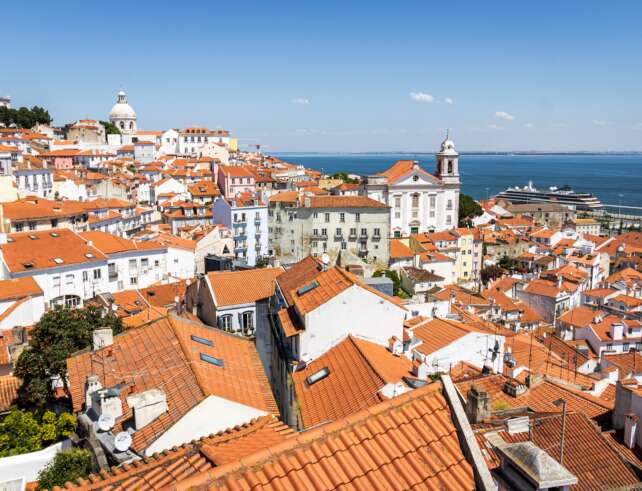
Baixa-Chiado
Lisbon’s most bohemian neighborhood, the streets of Baixa-Chiado are always full, day and night.

Praça do Comércio
Praça do Comércio is one of the most famous places in Portugal. It housed the royal palace for 200 years, and today it remains linked to politics, with several government rooms, but what makes it special is its proximity to the Tagus River, to the Rua Augusta, to the Santa Justa Elevator and to many bars and restaurants. Café Martinho da Arcada, for example, which have had as a client the poet Fernando Pessoa, serves delicious dishes.
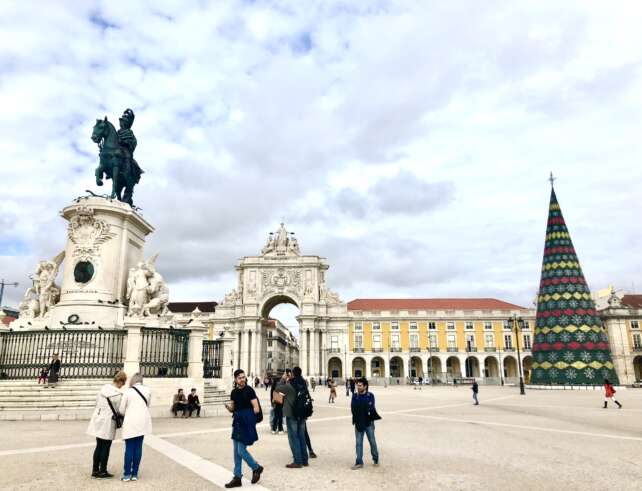
Torre de Belém
The Belém Tower was built with the purpose of defending Lisbon during the reign of D. Manuel I, and became a World Cultural Heritage Site in 1983. There is always a huge queue at the entrance, and the ticket to go up costs €6, but the ground floor is free.

Padrão dos Descobrimentos
This monument, which stands out on the right side of the Tejo river, is made up of sculptures of 33 of the main figures of the discoveries. The largest one (just ahead of all the others) is Infante D. Henrique. On one side are the navigators Vasco da Gama (second) and Pedro Álvarez Cabral (fourth). Inside the monument there is an elevator to the top, from where you have a beautiful panoramic view over Belém and the Tejo river.
Just behind the monument is a compass rose, with the map of the world in pink marble, and the main routes and dates of the Portuguese Discoveries. The shape of the monument is like a caravel. With a careful look, you will notice the candles on the vertical walls, the Portuguese weapons of the time, and a sword sculpture that has the Aviz cross, which represents the strength of the weapons and the Christian faith.
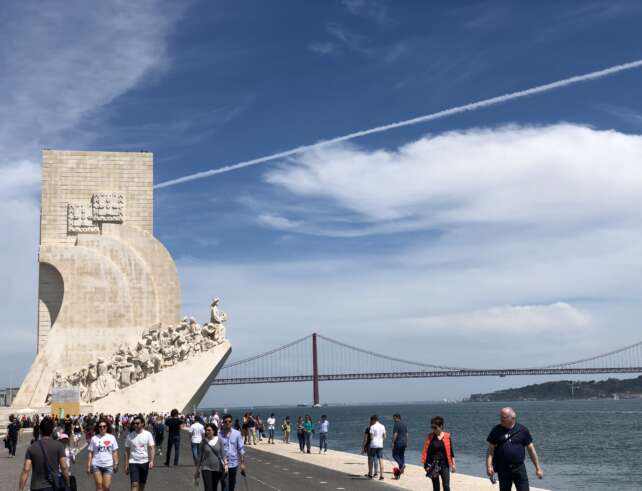
Mosteiro dos Jerónimos
Built by King D. Manuel I to perpetuate the memory of Infante D. Henrique, for his devotion to Our Lady and belief in S. Jerónimo, in 1496. It was donated to the monks of the Order of S. Jerónimo, and rests tombs of kings and poets.
It was declared a Cultural Heritage of Humanity, has a beautiful architecture and a very pleasant garden. If you are traveling with children, it’s worth have a break so they can play in the park.

Very close to the Jerónimo is the Pastéis de Belém snack bar. If you want to try the custard tarts, this is the place!! Delicious! The queue to take away is long, but the queue to eat in, usually, doesn’t take that long. I also recommend 2 other shops: The World Needs Nata and Manteigaria.

Castelo de São Jorge
Located at the top of a hill, I have to say that is not easy to go up there. But the view is worth it! If you have small children, the stroller helps despite the cobblestones. And if you have a car, you can go up to the Pingo Doce market, where there is parking.
The construction of the Castle dates back to the 11th century, and has traces of Islamic architecture. It was supposed to protect the military and the elite in the event of an invasion of the Citadel, but it had no resistance function, unlike most castles in Europe.
The view of Lisbon is privileged. In addition to the viewpoints, you can observe everything in real time through the Dark Chamber, having access to details of the city that almost no one notices.
The tour is delicious, there is a cafe for you to relax and replenish your energy, the gardens and towers are beautiful, and you can choose to take a guided tour, if you prefer. There are also educational activities, permanent exhibitions, artistic events and birthday parties.
Cristo Rei
The Sanctuary of Christ the King, opened in 1959, was inspired by Christ the Redeemer in Rio de Janeiro, and was a form of thanks to God for Portugal’s neutrality in the Second World War, and for the country’s peaceful instinct. The monument is 110 meters high, has a beautiful view of Lisbon and the banks of the Tejo river and, together with the Sanctuary of Fátima and Santiago de Compostela, forms the “golden triangle” for pilgrims in the Iberian Peninsula.
Detail for the monument’s prominent heart, symbol of Jesus’ love for humanity.

Praça das Nações
Praça das Nações is in the most modern region of Lisbon, has a tree-lined promenade that borders the Tejo river, benches to rest and enjoy the beauty of the place, restaurants serving everything from sandwiches to cod dishes, a cable car and a shopping mall very close by, Shopping Vasco da Gama. The flags on display refer to the countries that participated in Expo 98, a large world fair that took place in Portugal that year, and which happens every 5 years in other cities around the world.
Close to the Square is the Knowledge Museum, which sometimes has free activities, and is excellent for children. A few steps away is the Lisbon Aquarium, another very good program for children.
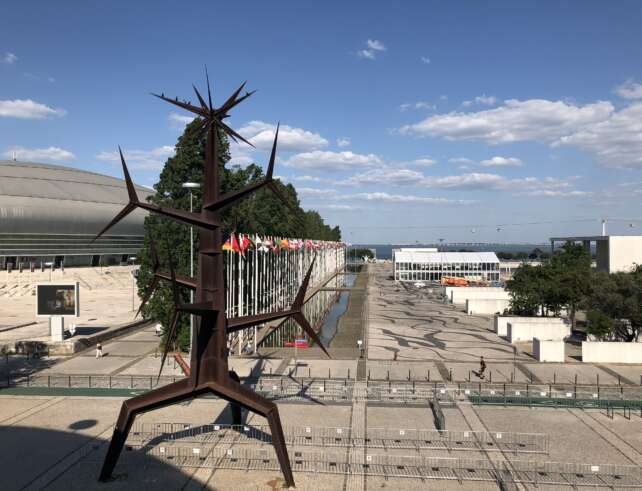
Avenida da Liberdade
It’s the main avenue in Lisbon and one of the most beautiful too. Connecting Praça dos Restauradores to Praça do Marquês de Pombal, it is full of designer stores, cafes, restaurants and bars.
Mercado da Ribeira
At Mercado da Ribeira (Time Out Market), you’ll find stands of decorative items and flowers, and many stands of dishes prepared by renowned chefs at more affordable prices. The variety is good, and ranges from traditional Portuguese snacks to meat and fish dishes, including sandwiches, the delicious pata negra ham, to pies, ice creams, macarons and éclairs.
Well organized, it’s easy to understand the dynamic of the place: the (free) bathrooms are right at the entrance, the drinks stalls are in the center, and the food stalls are on the sides. There are plenty of tables available, but as the place is crowded, it’s not very easy to get a chair.
Ruínas da Igreja do Carmo
The Carmo Church (Igreja do Carmo) was once the main Gothic church in Lisbon, a convent belonging to the Order of Carmelites of the Ancient Observance. It fell into ruins after the 1755 earthquake, and is one of the remains of the tragedy that struck the city. Today it houses the Archaeological Museum, with pieces from Prehistory to contemporary times.

Cascais
Cascais is a very charming old fishing village, 20 minutes away from Lisbon by car and 45 minutes by train, and is one of the most charming places in Europe. Below I list some tourist attractions.
Casa da Guia
Casa da Guia is one of the city’s icons. It brings together commerce, leisure and good food in a 19th century mansion. Perfect place to stop for lunch or a snack, with a wonderful landscape! Like every village in the coastal region, Cascais has intense fishing activity. Every day the restaurants receive fresh fish and seafood, and the price is very attractive!
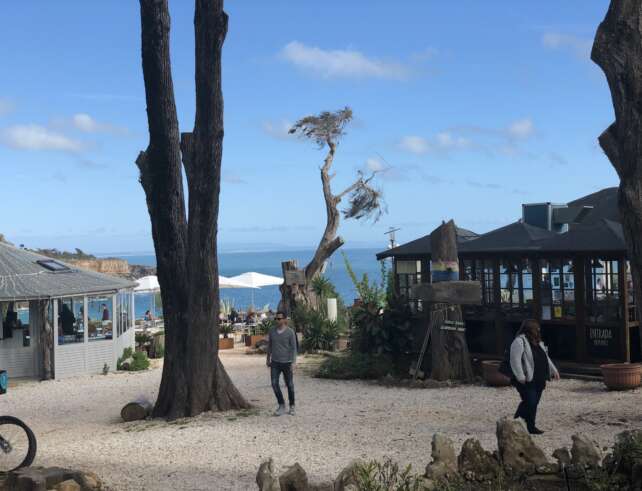

Centro e Rua Frederico Arouca
This is one of the main shopping streets in Cascais. Many tourists walk around here and the surrounding streets, buying souvenirs and stopping to eat the traditional pastel de nata or the famous Santini ice cream.
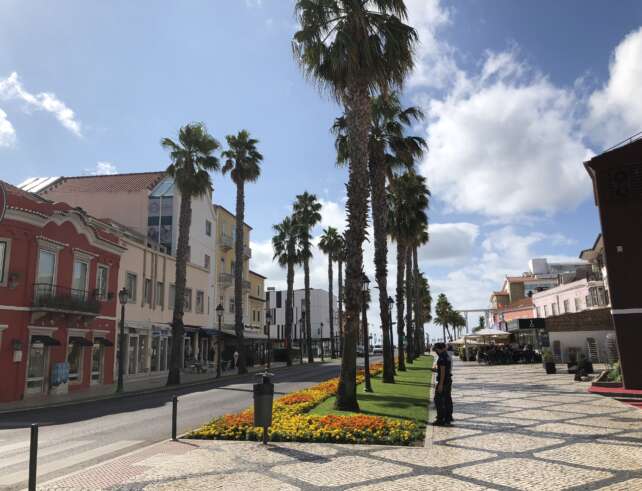
Cidadela
Art also has an intense life in Cascais. Over there, Lumina festival of light takes place for 3 nights in September, when national and international artists who use light as a form of expression enchant residents and tourists with arts. But in addition, there is the Museum District, which has 16 points linked to culture.
Inside the Citadel there is an inn and also the Cascais Citadel Palace, which used to host the Portuguese Royal Family in the summer. When the country’s regime changed to Republic, it started to receive the presidents of Portugal. It was opened to the public at the end of 2011, and since then has offered guided tours, temporary cultural exhibitions, seminars and literary events.
Praia do Guincho
Cascais is a town with events almost every weekend, and with 30km of beaches, both urban and wild. One of the most beautiful is Praia do Guincho. It’s one of the largest in Portugal and, due to the strong incidence of wind, it’s chosen by surfers, windsurfers and kitesurfers, and it’s where the world championships of these sports take place.

Boca do Inferno
One of the most famous tourist attractions in Cascais is Boca do Inferno. With a unique rock formation, the place got its name because of the noise of the waves hitting the rocks at the edge of the ocean. It’s a unique beauty!
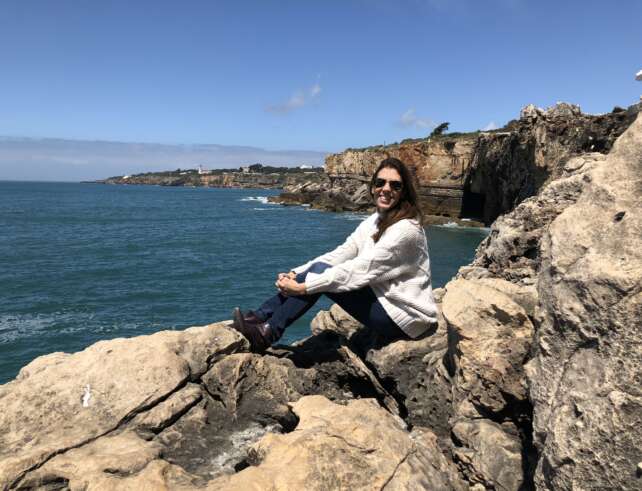
Sintra
One of the well-known villages in the Lisbon district, Sintra is a World Cultural Heritage Site. It has a very charming historic center, and it’s famous for the Palácio da Pena and the Castelo dos Mouros, two beautiful tourist monuments, open to the public with paid entry. Close to Sintra is Cabo da Roca, the westernmost point of Continental Europe.

